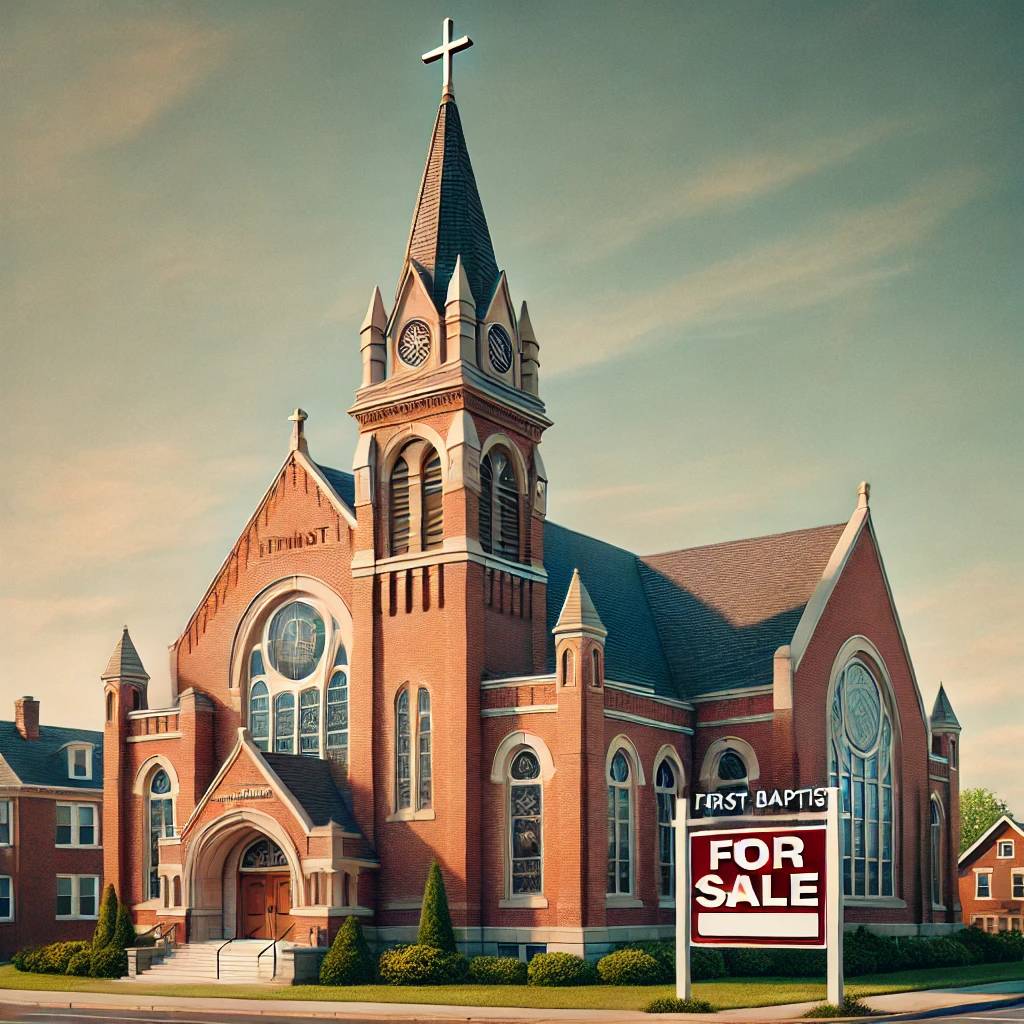
A Personal Loss
On average, approximately 4,500 U.S. churches close every year, and only 1,000 new ones open. And every year, 2.7 million church members become inactive, according to the U.S. Census Bureau. The statistics are impersonal until you think about the pastors and church members who feel the loss — pastors like Ryan Burge, whose dying church permanently closed on July 21.
Burge was the pastor of First Baptist Church in Mount Vernon, IL, for nearly 18 years. When you consider his education and experience, you might think he was well-equipped to save a dying church. You might be right.
He is one of the nation’s leading religious analysts and an associate professor of political science at Eastern Illinois University. Consequently, he spends his weekdays documenting the dramatic decline in Americans’ religious affiliation, The Jamaica Gleaner recently reported.
Burge has also written several articles and four books about U.S. religion and politics, including The Nones, which looks at the roughly 30 percent of American adults who don’t identify with any religion.
“I researched the decline of organized religion while having a front-row view of the change in my own life,” he noted in a post for Deseret News.
But even Burge couldn’t save the dying church he had pastored since 2006.
A Dying Church
“What’s happened at my own church is especially poignant since in my day job I research trends in American religion,” he said. “… when I first became a pastor, right out of college, there were ominous signs, but I did not foresee how quickly the end would come, hastened by the pandemic.”
First Baptist Church was a mainline church affiliated with the American Baptist denomination. Theologically, it was moderate.
Burge became its pastor while pursuing a master’s degree in political science. “I needed a job that would give me the flexibility to focus on my studies,” he explained.
“It seemed like a good fit at the time, both theologically and logistically, although it was inconceivable to me then that I would still hold the same position into my early 40s.”
The sanctuary “could easily accommodate 300 people,” he added. “That first year or two, I could count about 50 people scattered around the pews. The sanctuary felt sparse, but not empty – a relief, since I wasn’t the most credentialed pastor in the history of the church….
“What I lacked in education and experience, I was sure I could make up with enthusiasm,” he said in a story posted by Deseret News.
“There’s an apocryphal quote from John Wesley, the founder of Methodism, that I thought about often in those first couple of years: ‘Light yourself on fire with passion, and people will come from miles to watch you burn.’ I tried to light that match every Sunday morning. People didn’t show up.”
Yet, Burge was hopeful.
The Beginning of the End
The decline of First Baptist began in the 1970s and 1980s. “If you talked to five members of my church about this period of time, you would get five different reasons for the decline,” the young pastor wrote.
“An ill-advised sermon drove off few a key families. Lots of kids who grew up in the church went off to college and didn’t return to rural Illinois because of the lack of employment opportunities.” First Baptist also had to compete with churches that energized their services with guitars and drums.
Whatever the causes, the church’s membership was less than 100 by the 1990s. Burge’s optimism faded as he realized he couldn’t turn it around.
“I think at that point most members knew in their hearts that the end was coming for the church.”
Yet, they didn’t discuss it. “It was better to keep our heads down and focus on the next worship service….” Burge said.
A Flourishing Career
As Burge dealt with the realities of a dying church, his college career and related work flourished. “I began to plunge headlong into data about American religion,” he said.
By this time, he had a doctorate in political science and was an associate professor at a nearby university. On Sundays, he preached to a tiny congregation.
He also began posting graphics on Twitter (now X) that depicted America’s changing religious landscape. People generally ignored them until he posted a line graph showing changes from 1972 to 2018.
Non-religious Americans had become as numerous as evangelicals.
The post went viral, and major media outlets across the country picked up the story.
“What I was seeing in the data was unmistakable and mapped perfectly onto what I was seeing every Sunday – mainline Protestant Christianity was in a near free fall, and the numbers of nonreligious were rising every single year,” he said in Deseret News.
Assessing Blame
The media became fascinated by Burge. Here was an expert on the decline of American churches whose own church was dying. He gave interviews and accepted requests to speak to hundreds of people at a time.
“When I was asked what motivated me to continue to do this kind of work, all I could say was, ‘I’m just trying to help other people see the big picture….’ What I was really trying to do was convince myself that the rapid decline of my church wasn’t my fault.”
Negative thoughts nagged him.
- I shouldn’t have become a pastor.
- I became First Baptist’s pastor for the wrong reasons.
- I didn’t have enough faith.
- I didn’t try hard enough.
- I wasn’t willing to do the hard work needed to revitalize my dying church.
Large crowds wanted to hear the now-famous religious analyst speak, but fewer and fewer people wanted to hear him preach. With a largely empty sanctuary facing Burge and his congregation every week, the church decided to move services to a classroom.
But money was tight, and the large building had become an albatross. The church eventually decided to sell the property.
It was difficult. “There were countless members of First Baptist who had donated their time and their labor to construct that building in the 1960s,” Burge said.
“They had given over and above their tithe to finance the bricks, the carpet and the pews. I couldn’t get over the feeling that I was letting all of them down. I still can’t.”
Selling a Church
One real estate developer who looked at the property wanted to raze the building in favor of a subdivision or a commercial property. Other real estate professionals toured the property but didn’t follow up with Burge, and one person offered a mere $150,000 in cash.
The situation looked grim until another local church approached First Baptist. It wanted ownership of the building to house its private Christian school and would let First Baptist hold services there on Sundays.
A Dying Church Reaches the End
“It felt like we had been granted a divine stay of execution,” Burge recalled. The arrangement worked well for about two years. But by then, membership had dropped to 10, and the dying church was on life support.
“I didn’t need to put together a statistical model to tell my members when the bank balance was going to hit zero. They could do the math,” he said.
“I guess people assume that since I spend my days digging through religion data, I should have been able to uncover the secret to getting people back into religion…. If I knew anything about how to grow a church, I would have done it by now.”
With the closure of First Baptist, Burge feels uncertain about the future. Where will he attend church? Will his own faith survive? Will the Christian church be around for future generations?
He’s fearful. He admits, “I’m terrified.”


